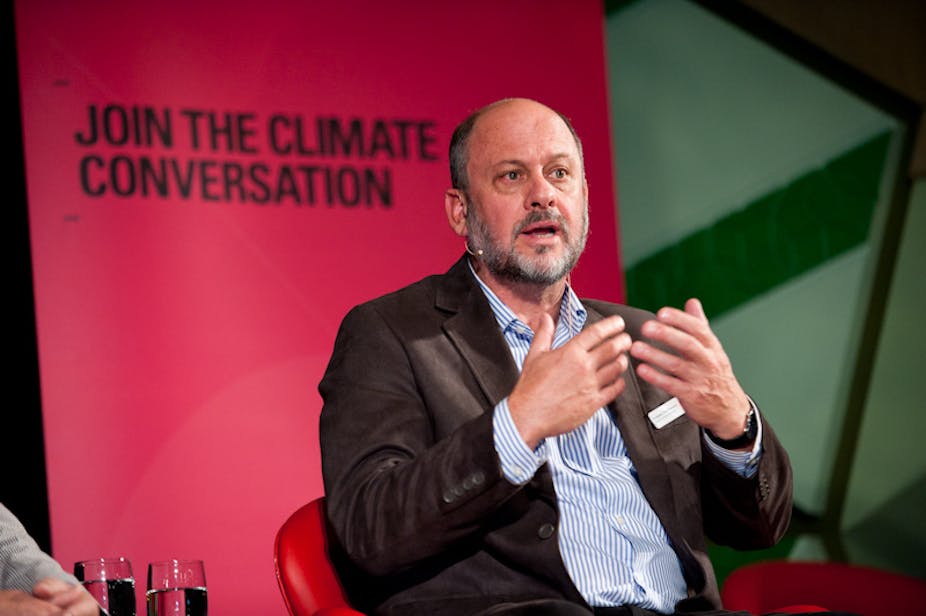The Climate Commission’s latest report, released recently, and some of the media that arose from it are excellent examples of science and journalists working together to talk about climate change and extreme weather. But examples like this are too rare: in Australia, we find that the mainstream news media is reluctant to mention climate change, talking about extreme weather events as freak accidents. And the situation isn’t helped by scientists who are reluctant to speak out on their research.
Curiously, when climate change first became an issue in the 1980s, almost all of the press was led by scientific sources. The role of human activity was not contested at all until climate change became politicised in the 1990s by interest groups, politicians and an adversarial “debate” between sceptics and an IPCC-led science of consensus.
With the exception of radical climate scientists like the recently retired James Hansen, climate scientists became regressively cautious about their forecasts. Fear of being debunked by powerful interest groups took over. This actually led to an increase in visibility of activist and advocacy groups in the press.
The anxiety shown by the IPCC group editors over the leaking of the first draft of the fifth Assessment Report, not due out until September this year, is evidence of this.
The Climate Commision is again placing the science on the front foot. The earlier pictorial Angry Summer report tapped into the media currents reporting on extreme weather as weather, and brought climate back in. The current report provides a fuller scientific context for the record-breaking events that just swept the nation.
Early analysis from a study being conducted by researchers in Communications and Media, and Journalism Studies at Monash University, suggests that the electronic platforms of public and independent news outlets are leading the way in this. Newspapers are lagging well behind. Whether it is heatwaves, floods or firestorms; climate is marginal in the discourse of disaster reporting.
For example, a spectacular oversight during the Queensland floods of 2011 was the fact that - unlike the cyclone-generated floods of 1893 and 1974 - there was no cyclone driving the floods at all. Instead, unprecedented evaporation and rain – enough to generate an inland tsunami and kill 36 people – drove the disaster. But of the 2,004 news articles published in the Australian press during the six peak days of the floods, none made this link. Only 25 suggested there might be a link to climate change.
Extreme weather events only become newsworthy if they can be pressed into forms of story-telling that appeal to a sense of salvation from an immediate public crisis, rather than what these events say about climate change. Commercial television news in Australia has long excelled in inviting the disaster marathon right into its promotional advertising, with orchestral backing, close-ups of agonised faces, slow-motion helicopters and vox-pops of despair enticing audiences to switch over “in times of crisis”.
With the Climate Commission’s publication of Extreme Weather, an alternative frame for reporting severe weather events is now available. When the science is linked to new extremes seen in heatwaves, floods and fires, we could be spared from the “miracle escape” and “fury of nature” framing of news stories.
Where the reporting of catastrophe has long obscured the communication of the science, catastrophe might now become the pedagogy for its communication and a focus for mitigation.
It is time too that Australian climate scientists, who are well represented in the IPCC (with almost 5% of the 802 authors of the fifth IPCC AR report), directly linked their work to upcoming extreme weather. Peak bodies like the Climate Commission, and the CSIRO are vital news sources, but US research shows that awareness of anthropogenic climate change increases with the amount of coverage not just the content.
Australian climate scientists seem to have much more trouble relating to the broader public than their counterparts overseas going by their under-representation as sources in news outlets.
A February report in Science Communication suggested that a majority of German scientists have had professional contact with news media and their representation exceeds that of other scientific fields.
While the report suggests that more than half of the contact is made by journalists and PR departments of scientific organisations and universities, a surprise finding was that 82.3% of these scientists made scientific decisions such as the choice of research topics with some consideration of likely media interest.
It would appear that climate change communication faces a different task in Australia than in Germany, where much of the debate is about how to combat climate change. The Monash study will investigate the impediments Australian Climate Scientists have in getting their research publicised, looking at both scientific institutions and newsroom cultures, to understand this difference.
Improved media adaptation of climate science is as important as climate adaptation of the media. The Climate Commission is leading the way in this regard. It represents a group who are possibly going to be the most important body of public intellectuals of the 21st century.
Comments are welcome below, but please keep them on topic: how is the media dealing with portraying extreme weather in the context of climate change, and what role could climate scientists have in this?

